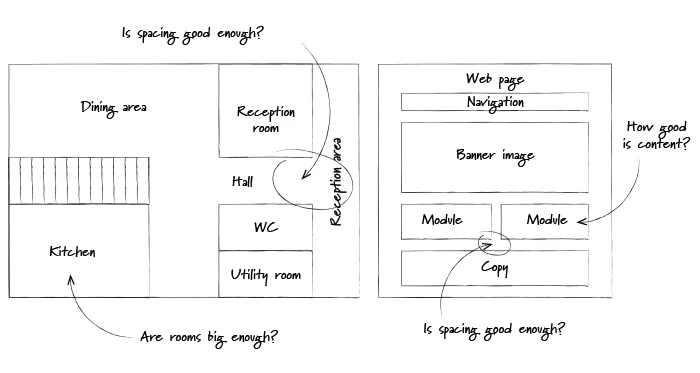User Experience, commonly simplified as UX, is more than a concept – it is an approach which has in recent years become known to the digital industry as intelligent approach to website design. UX designers traditionally think more strategically than a general web designer, using psychology and ethnography to build personas. Cognitive science supports UX designers to build frameworks for websites, assisting the transition between users’ needs to their requirements and expectations from websites.
There are four key fundamentals of user experience design:
Let’s look more at information architecture and why architecting websites is fundamental to enhancing the user experience.
A user-centric approach to web design is now being adopted more across the digital industry as a result of this already being commonplace and incredibly successful in the branding and architectural design space. When creating a new brand, stakeholders’ psychology has to be understood to enable a brand to be formulated. In industrial or residential architecture, the emotions, desires and requirements of individuals have to be considered and factored into planning and design before a construction commences. This is evident when watching long-running TV programmes such as Grand Designs. No construction is ever approached light-heartedly without consideration for the user, so why should websites be?
Without an architectural design process, a property becomes less bespoke, less personalised and as a result, less connected with the user. Let’s look at some comparisons between traditional architecture and website information architecture:

These are just some examples of the crossover occurring, which should always be considered and researched well in advance of a design commencing. A website without architecture can be attractive on the exterior through the visual design, but a confused layout on interior, with no clear pathways or junctures for the user to follow.
Purchasing a house on a residential development in the knowledge that each new-build house may have similar features, characteristics and dimensions may not be such an issue for many. After all, when investing in property, there are often not enough funds available to customise a new build, or to create a grand design which really sets your property apart from others.
When it comes to websites, the possibilities are endless as the costs involved to architect and create a stand-out proposition are far more affordable.
User experience matters not only to users of your website, but also to search engines. An algorithm update released by Google reflects this. Not only do websites have to render to users across desktops, tablets and mobiles, sites also have to provide user experiences which accommodate the needs of users in a simple yet effective manner to achieve optimum performance. With digital such a competitive space, companies now have to think longer and harder about how to balance their website to design for users, as well as for the satisfaction of their internal stakeholders.
It is no longer good enough to have a website that looks great visually. Most websites today manage to achieve this by following modern design principles anyway. What is crucial to improving stakeholder satisfaction and conversions is to approach design with users at the heart of every thought process, through to execution of well-researched concepts and ideas.
Fundamentally, user experience design simplifies the web design process. Without UX being considered, websites risk become a never-ending project through decision makers making ongoing tweaks and changes without any scientific or strategic thought involved. This can result in throwing good money after bad, by companies investing more time and money over a longer period to rectify issues such as a lack of engagement or conversions without ever having a clear picture of where the failings were in the first instance.
Factoring user experience into the design project from the outset stems the flow of issues occurring. If UX isn’t considered, and users cannot easily find information or have difficulty engaging with key elements of a website, then they will quickly leave and visit competitors.
Ultimately, it is much simpler to follow a clear strategic process with a website project, creating a site which is made-to-measure (with users at the heart of the process) from understanding how users behave to creating a stand-out visual design which provides the wow factor!
This process also reassures clients that the design strategy is thorough, with due care and attention paid from the UX web designer to the client from day one around understanding not only the aims and objectives for the website, but also the way that users behave.
Post originally appeared here